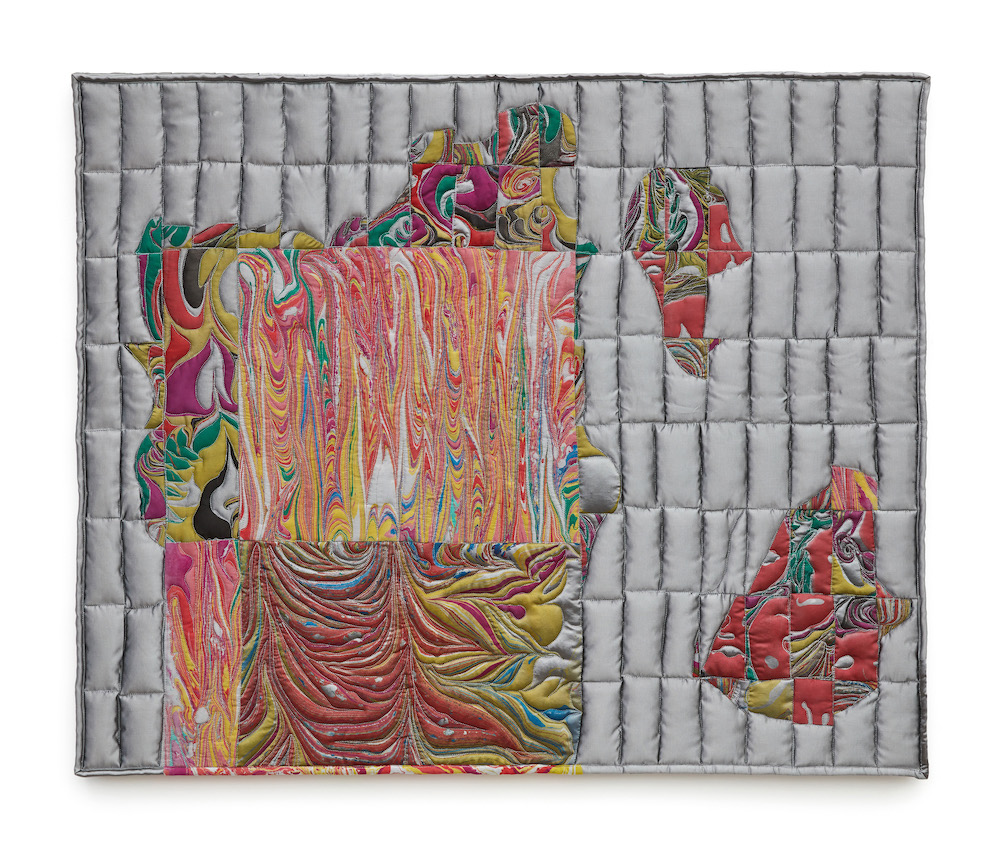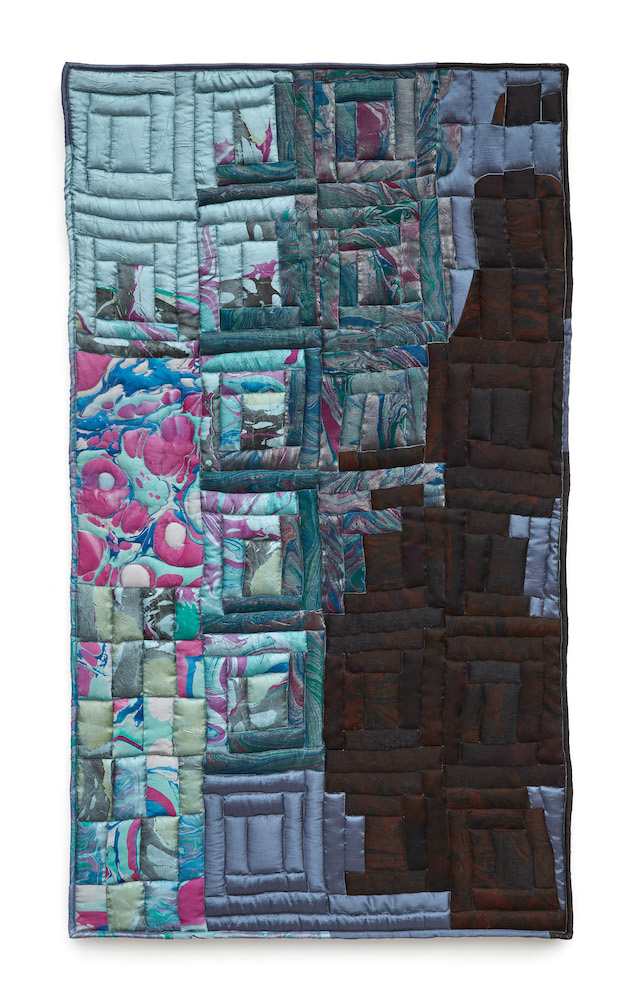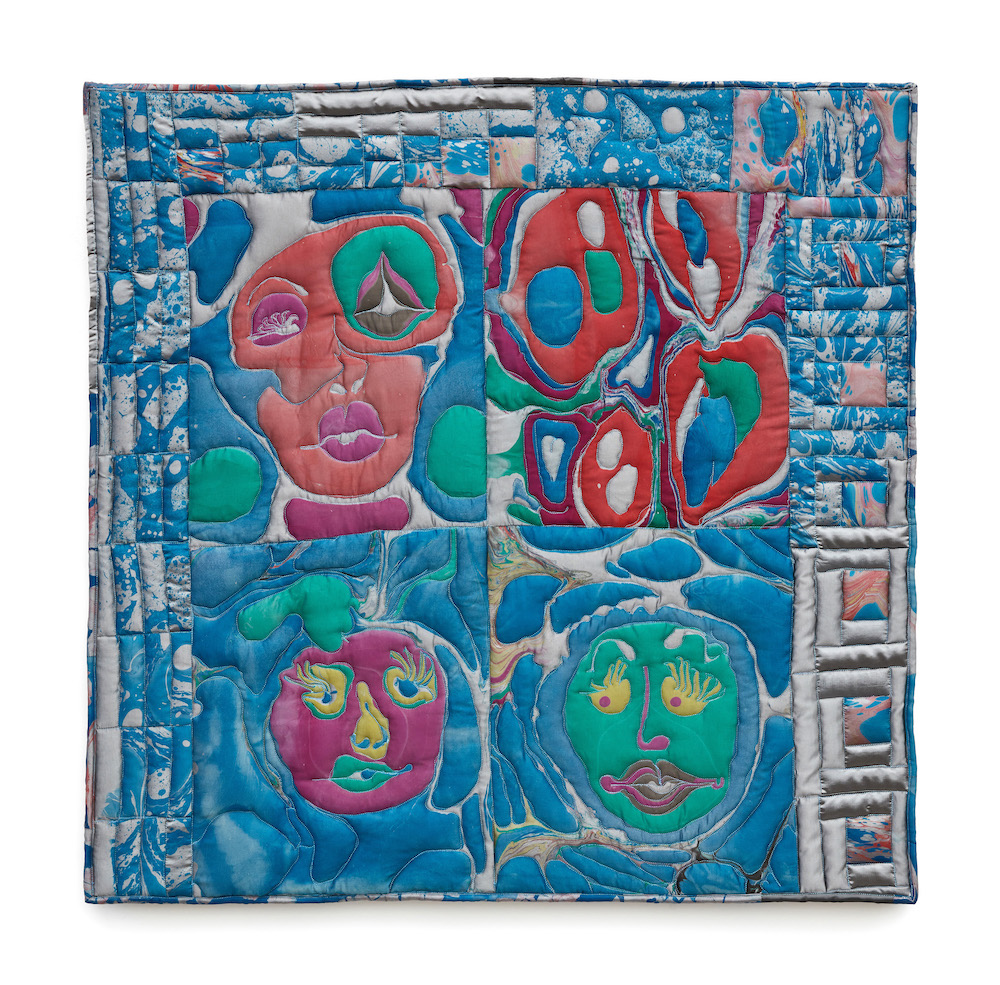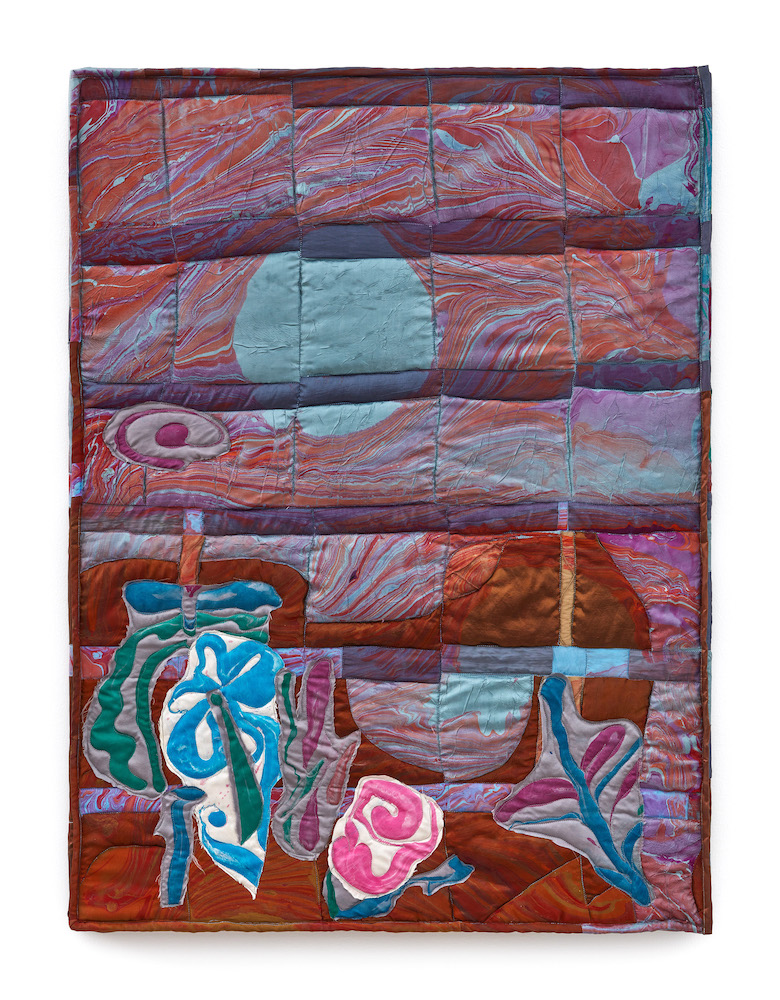Communal and collaborative art practices have long appealed to artists as a means of disrupting the patriarchal mythology behind the solitary creative genius, and escaping the art-market matrix of competition and authorship. For the two Los Angeles–based artists behind Libby Rosen, Anne Libby and Anna Rosen, collaboration afforded them not only freedom from the ritual of production and promotion, but liberation from themselves.
The two women first met in New York City when Rosen walked into a gallery where Libby was temporarily working, carrying an enormous Skechers display shoe. Rosen disclosed that the sneaker was part of an art project and described her fascination with unconventional materials and formal experimentation, which paralleled Libby’s own interest in degree and tone. Their friendship was solidified in that moment. “The shoe was a perfect litmus test,” explained Rosen when I visited them in their joint studio, adding, “and that Anne was laminating seaweed for her next exhibition.”
Libby, who primarily works in sculpture and wall relief, combines construction materials, mechanical parts and domestic consumer products to disrupt perspective and subvert systems of order. Exploiting the mimetic qualities of surface texture, transparency, reflection and luminosity, she engenders illusions that range from the polemic to the poetic. One might find Formica tables, window blinds, polished aluminum, metal hardware, satin and the retroreflective fabric of nighttime security guards arranged in intricate architectural towers or quilted together and affixed to plywood.

Libby Rosen, Dance the Mutation, 2022.
Rosen, also interested in the subversive possibilities of structural facades, creates symbolically charged, decorative trompe-l’oeil paintings across limestone and various textile constructions. Practicing a traditional Turkish marbling technique known as ebru, or cloud art, she floats pigment straight from the tube onto water baths, where the drops spread and condense, swirling in and around one another to for balletic and phantasmic shapes. Then, using a paper clip, she coaxes the paint into recognizable iconography, such as flowers or faces, before transferring the entire image onto a paper or textile surface, just as one would a monoprint.
Libby was working on a quilt that resembled the curtain glass visage of modern skyscrapers when she first asked Rosen, whose studio was in the same converted warehouse building in downtown LA, for some of her marbled textiles. “These massive towers are so gridded and monumental—everything about them is planned, except for the reflections of light,” Libby told me. “That opportunity for disruption and destabilization felt really psychedelic and aesthetically similar to Anna’s marbling.”

Libby Rosen, Shower Scene, 2022; courtesy of Night Gallery.
When Libby integrated the painted silk into her architectural grids, the unfurling flourishes of color uncannily evoked the flickering motion of light atop glass and the iridescent rainbows that refract from unintentional prisms. Encouraged by the synthesis of their respective visions, they began collaborating in earnest. Their process—cutting up the quilts, re-marbling directly on the silk, topstitching along grids and gestural lines, repatching and repainting—created their form. Each step preserved like layers of sediment beneath the final facade.
At times, they work in tandem but more often hand the quilt back and forth in a rhythmic call-and-response that enables them to disrupt, as light disrupts mirrored windows, and deepen—as psychedelics deepen ordinary perception—each other’s processes, and in turn, their own. “Working together is like being suddenly free from all the conscious and unconscious rules and constraints you set for yourself,” Rosen said. “I have far greater access to abstraction from working with Anne and a broader experience of color.” For Libby, Rosen’s influence loosened her dependence on conceptual ideas and diversified her engagement with her material, which, she added, “really opened up what’s available and made space for surprise and exploration.”

Libby Rosen, Party Line, 2022. Courtesy of Night Gallery.
Within the textile sculptures, the alchemy of dissonance strengthens the presentation of their affinities, producing a palpable electric current. The tension between the rigidity and precision demanded by Libby’s process, Rosen’s fluidity and openness to the interventions of chance animates their convincing illusory effects. Similarly, Rosen’s narrow palette of bright, super-saturated hues combine with Libby’s neutral and nuanced tones—rather than clashing—give the work a 3D quality and likeness to carved bas-reliefs.
The finished silk quilts, affixed to stretcher bars like canvas, appear both structural and decorative, ephemeral and monumental, surreal yet familiar as a window you look through daily—only to find a different view each time. The striking impression of the whole transcends the sum of its parts and any distinction between the two artists’ contributions.
“What started as us adding two equal but separate things together, created this entirely new, third thing,” said Rosen. When asked what that third thing is, they simultaneously answered: their relationship. Along with the dissolution of authorship and its attending tendencies toward self-promotion and overidentification came the transfiguration of the art object from a commodifiable good to a record of an intimate aesthetic connection. “My feelings about these are so much more positive. I can have empathetic, healthy, happy thoughts about them because they’re as much Anne’s as they are mine,” mused Rosen.
The feeling of shared joy extends beyond the artist to the viewer. Standing before a florid winking face slipping between pearlescent patches on one of their quilts, it’s nearly impossible to keep from losing yourself in the conversation you’ve been so generously welcomed into, as I did time and again. “You can tell people feel more included by the collaboration, and maybe more connected to it,” said
Libby of the response to their first exhibition under the pseudonym Libby Rosen at Night Gallery last year. “Whenever you can reach someone, and there’s real communication going on through the work,” added Rosen. “That’s a reason to keep making art.”


